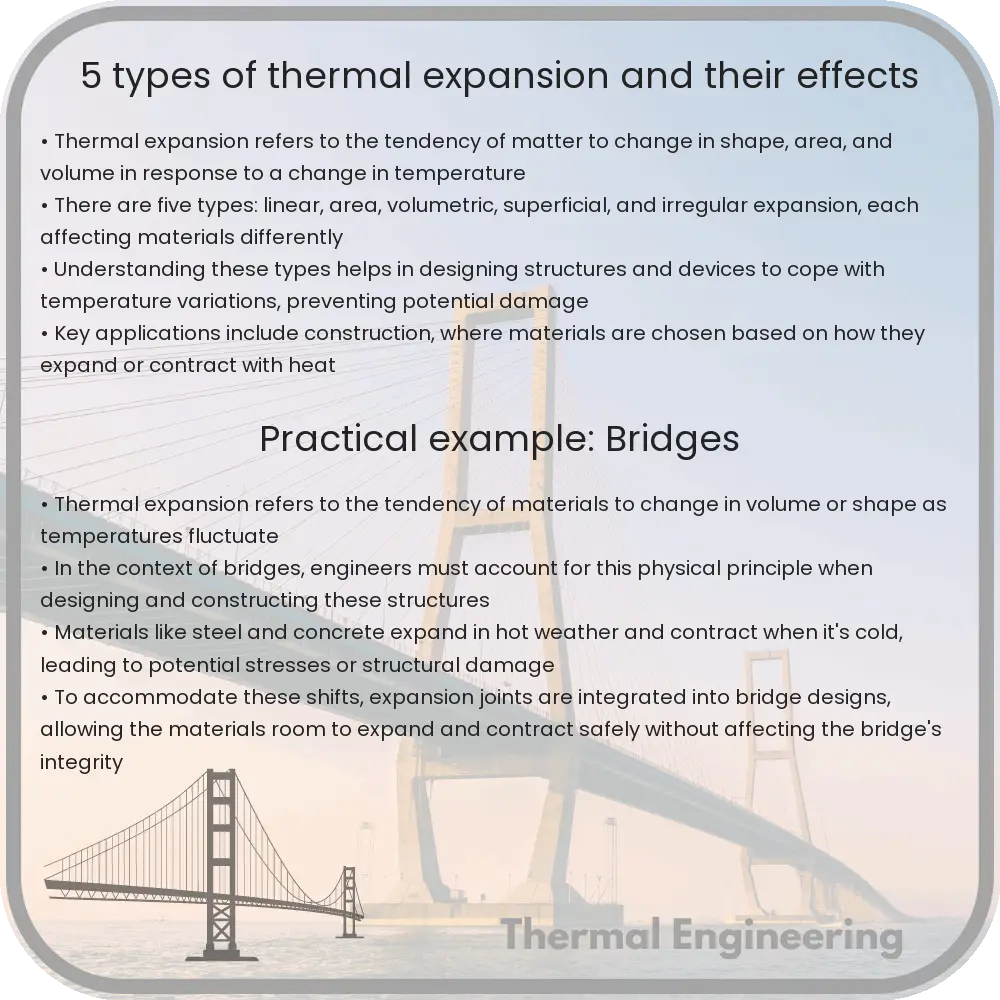Learn about thermal expansion, its various types such as linear, area, volumetric, anisotropic, and differential expansion, and their practical implications.

Understanding Thermal Expansion: 5 Types and Their Effects
Thermal expansion refers to the tendency of matter to change its shape, area, and volume in response to a change in temperature. Virtually all substances expand when heated—the degree and type of expansion, however, vary depending on the material properties and the way the material interacts with heat. This phenomenon has significant implications in engineering and everyday life, as it affects everything from the construction of bridges and railways to the design of electronic devices. Let’s explore five common types of thermal expansion and their effects in practical applications.
1. Linear Expansion
Linear expansion is the change in length of materials as a response to temperature changes. This is most relevant for objects that are much longer in one dimension than in the others, such as rods and beams. The linear expansion can be calculated using the formula:
L = L0(1 + αΔT)
where L0 is the original length, α is the coefficient of linear expansion, and ΔT is the change in temperature. Linear expansion is crucially accounted for in engineering applications such as the construction of rail tracks and bridges, which might otherwise buckle under thermal stress.
2. Area Expansion
When heat is applied to a two-dimensional object like a sheet of metal, its area expands. Area expansion can be estimated by modifying the linear expansion formula to account for two dimensions:
A = A0(1 + 2αΔT)
Here, A0 is the original area. The factor of 2 indicates that the expansion occurs both in length and width. This type of expansion is particularly important in applications such as the manufacturing of precision parts in engineering and technology, where small changes in area can lead to significant function issues.
3. Volumetric Expansion
Volumetric expansion occurs when a three-dimensional object expands due to an increase in temperature. It is critical for materials used in containers and systems designed to hold fluids. The formula for volumetric expansion is:
V = V0(1 + 3αΔT)
Where V0 is the original volume, and the coefficient is multiplied by 3, reflecting expansion in three spatial directions. This principle is essential for the design of anything from fuel tanks to thermal expansion joints in piping systems.
4. Anisotropic Expansion
Anisotropic expansion refers to materials that have different rates of expansion in different directions. This characteristic is typical of crystalline materials where the atomic arrangement varies along different axes. Engineers must consider anisotropic expansion when using these materials in high precision devices such as lasers or satellites, where directional dimensional stability is paramount.
5. Differential Expansion
Differential expansion occurs when different parts of a composite object expand at different rates due to variations in material properties or geometric considerations. This can lead to mechanical stresses and potential failure. An everyday example is bimetallic strips used in thermostats, where two metals expand at different rates to bend the strip and break or make contact, activating a switch according to the temperature.
Understanding these types of thermal expansion and their respective formulas enables engineers to design more stable and reliable structures and devices. It also helps in developing innovative solutions that can accommodate or exploit these physical changes in materials brought about by temperature changes.